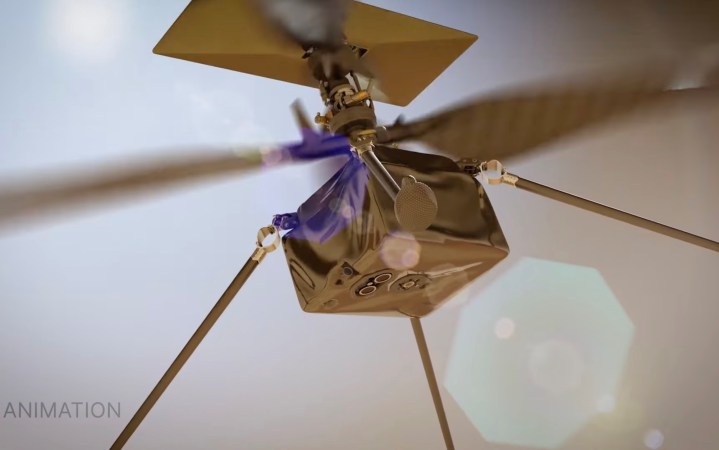
It’s been a couple of weeks since NASA’s Mars helicopter, Ingenuity, took its final flight on the red planet.
It was grounded for good after suffering damage to one of its propellers during its 72nd and final flight. But despite the disappointment, it was widely recognized that Ingenuity achieved much since arriving on Mars in February 2021.
Not only did it become the first aircraft to achieve powered, controlled flight on another planet, but, as explained in a new video released by NASA on Wednesday, Ingenuity was also pushed to test its aerodynamic limits, on many occasions breaking its own records for speed, distance, and altitude.
Speaking from the Aerial Vehicles Lab at NASA’s Jet Propulsion Laboratory, which oversaw the rotorcraft’s mission, Ingenuity chief engineer Travis Brown discussed some of the record-breaking moments.
Brown explained, for example, how Ingenuity was originally expected to make as many as five flights within a 30-day period, but ended up flying 72 times during almost two years on the red planet.
Once the aircraft was shown capable of achieving controlled flight in Mars’ super-thin atmosphere, the team paired the vehicle with Perseverance, the ground-based rover that arrived on Mars at the same time as Ingenuity. It experimented with new ways to target Ingenuity’s high-resolution camera, with the captured aerial imagery helping the Perseverance team to plan safe and efficient routes for the rover as it scoured the Martian surface in search of evidence of ancient microbial life.
Brown said the Ingenuity project really began in earnest with flight 49 when the aircraft set new speed and altitude records. By flight 62, Ingenuity had achieved its highest and fastest flights, reaching an altitude of 24 meters and a top speed of 22.4 mph.
The team also tested different landing speeds for the aircraft — faster ones to save power and slower touchdowns to reduce landing load — and even instructed it to conduct first-of-their-kind studies on the planet’s wind and dust movement, offering new insight into the Martian atmosphere.
Brown said that everything the Ingenuity team learned from its 72 flights will be applied to the design of next-generation rotorcraft destined for Mars and possibly other planets in our solar system.
Editors' Recommendations
- NASA video maps all 72 flights taken by Mars Ingenuity helicopter
- Final communications sent to the beloved Ingenuity Mars helicopter
- NASA reveals target date for first crewed Starliner flight
- NASA puts out call for potential Mars astronauts
- The NASA Mars helicopter’s work is not done, it turns out


